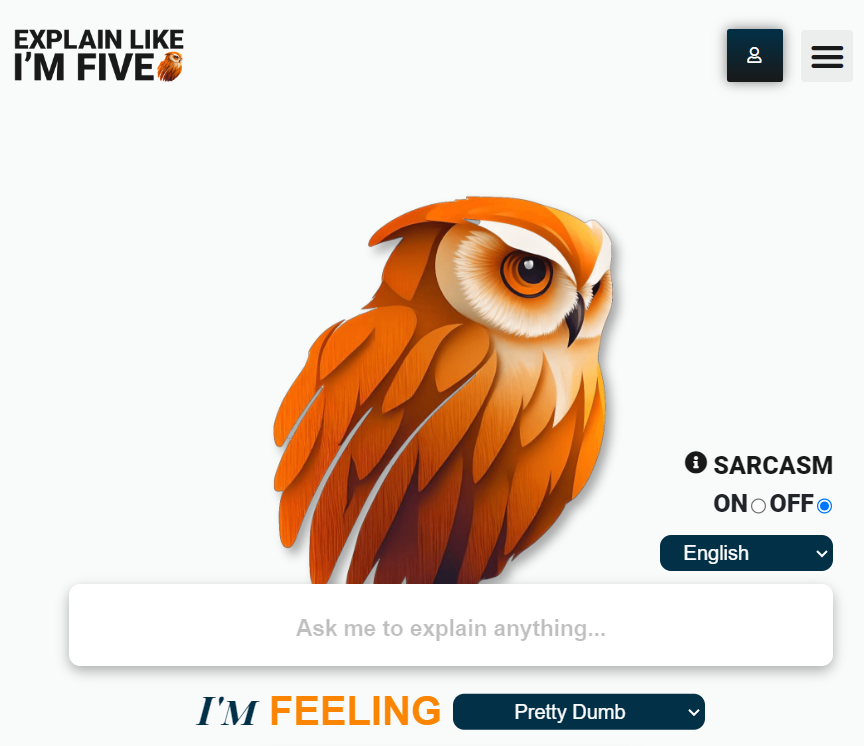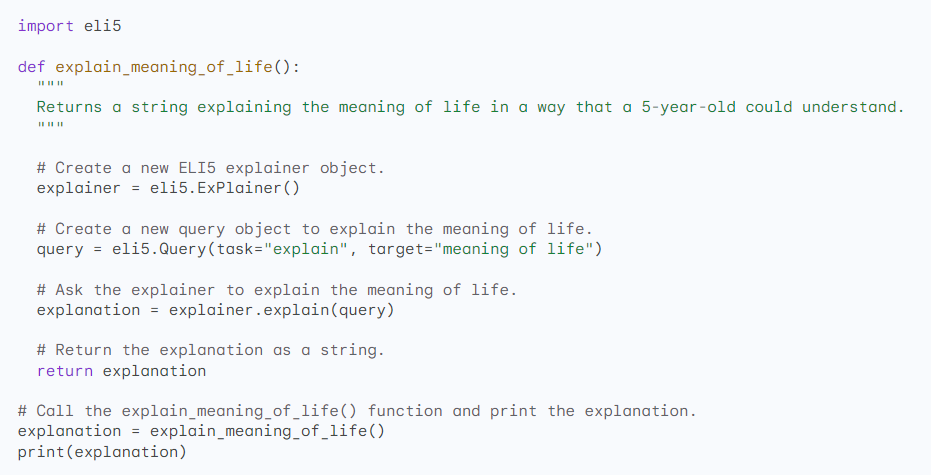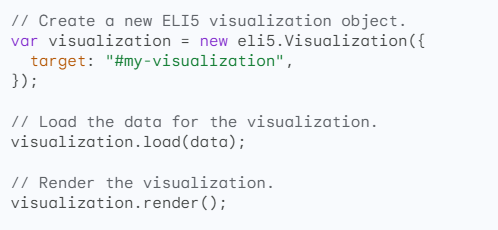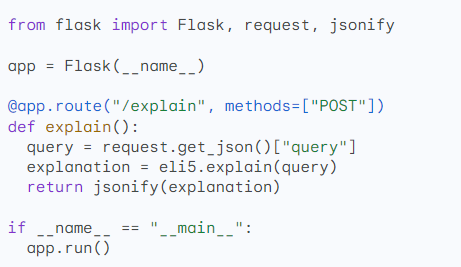Explain Like I’m Five AI (ELI5)
Short Description: Explain Like I’m Five or ELI5 is an AI powered website that can simplify complex topics in a fun and engaging manner for different levels of competency which you can choose from. Discover topics from neurobiology, meaning of life, quantum mechanics, atoms, molecules and so. ELI5 makes the learning process fun, covering a wide variety of topics, perfect for students, teachers, content creators, professionals and anyone curious to learn more.

Brief Description:
Founded by a team of educators and developers, Explain Like I’m Five or simplified ELI5 platform, aims to help users with explanations of complex topics in a simple way, making intricate subjects accessible to anyone, no matter the background. ELI5 started as an idea from #ELI Twitter and r/explainlikeimfive subreddit group and became popular later on. ELI5 uses advanced AI models, such as GPT-4 and ChatGPT to analyze the complex questions from the prompts and provides simplified responses using relatable examples and analogies.
ELI5 will provide simple definitions with or without sarcasm involved, which you can select from the web interface, under the name of “SARCASM”. ELI5 supports multiple languages such as English, Arabic, Polish, Portuguese, and so on. You can choose your level of competency starting from “Pretty Dumb” to “Pretty Smart” and get different intriguing explanations.
Currently, ELI5 is free to use with a limited number of tokens per day. For full-time access to the platform, extra tokens, support and other features, you can subscribe to a plan with a 7 day free trial. The existing plans you can choose from are “Just Curious” and “Tell Me Everything”, charged with 3,99$/month and respective 6,99$/month.
Architecture:
The architecture of Explain Like I’m Five AI is a scalable and efficient one based on a client-server model, meaning the client is the web browser and the server is the machine that hosts the large language model (LLM) and other components. The two components interact with each other through an API, exposing a single endpoint /explain that accepts a query as a parameter and returns an explanation in the JSON format.
Features:
ELI5 has developed few AI-powered features. Some of them are:
Key Technical Features:
ELI5 has not officially released yet an API documentation, but the team is currently working on releasing in 2024 a free API technical documentation free of charge. Until then, you can find an auto-generated ELI5’s API documentation, by clicking right here:
Accessing the API
It is expected the API to be available for developers for free and to expose a single endpoint /explain passing in the query gravity as a parameter. The output result should be an easy to understand and read explanation, in simple terms in a JSON format.
Software Architecture
The software architecture of ELI5 was designed to be flexible, scalable and efficient, using multi-threading to handle multiple requests from concurrent clients and handling a large number of requests simultaneously.
ELI5 AI is a complex platform that uses GPT-4’s large language model from OpenAI to generate simple explanations you can explain to a five year old child. ELI is actually a large dataset for long-form question answering, containing 270K complex and different questions and answers from the Reddit website /explainlikeimfive group. Compared to other existing datasets, ELI5 comprises different questions requiring multi-sentence answers.
ELI5 uses indirectly also Seq2Seq neural network from GPT-4’s OpenAI training set, to translate one sequence of data into another sequence of data. Commonly used for relevancy, translation, text summarization and question answering.
Programming Languages
ELI5 AI was developed using the following programming languages:
- Python
- JavaScript
- HTML
- CSS
- Flask
- React
Python: ELI5 is a Python library currently implementing Python 2.7 and Python 3.4+ that helps debugging machine learning classifiers and explain its resulting predictions. Python offers support for machine learning frameworks such as scikit-learn, keras, xgboost, lightgbm.
Example of Python script used to access ELI5 AI service:

Thoe code snippet will provide a simplified answer to the question of the meaning of life.
We need to import the ELI5 library so define a new function called explain_meaning_of_life() and can create the explainer object that will call the ExPlainer() function. The explainer is responsible for generating explanations for the queries that are passed to it. The .Query() function is responsible for querying the targeted text that needs to be answered. The last line of code returns the explanation as a string.
Javascript: For developing ELI5’s user-friendly interface and functionality the team also used Javascript. Known for its capabilities in developing web applications, Javascript is a powerful tool to develop interactive visuals such as charts, graphs to client-side functionalities such as submitting queries, saving favorites and so on.
Code snippet example of using Javascript together with ELI5 to create a visual theme:

post-32.png

The code listens for the event when the user clicks the “Submit” button, to generate the explanation for the query from the prompt and display it.
Flask is a web framework, a module of Python, dedicated for small and large web applications, based on the Werkzeug WSGI toolkit and the Jinja2 template engine. ELI5 uses Flask to serve its web pages and assets that are needed to display the explanations and the visualizations, to handle user requests and integrate other third-party web services, like Google Docs.
Code example of a code snippet using Flask with ELI5:

This code example defines a route for the /explain endpoint. Accessing this endpoint, submitting requests is now enabled. The route function parses the query from the request body and will generate an explanation in JSON format.
Frameworks:
Due to its user-friendliness interface and complexity, ELI5 AI uses a number of different common frameworks for developing its powerful software.
TensorFlow: TensorFlow is the most popular open-source framework for building and training machine learning models, developed by Google Brain team. ELI5 AI also uses the OpenAI which is implemented in TensorFlow, offering a great set of tools and resources from high-level APIs for building the models, to low-level APIs for customizing them and a large library of pre-trained models for common tasks.
Machine learning libraries are also used to train and deploy machine learning models. ELI5 uses machine learning libraries to explain model predictions and understand how they work behind the scenes. Examples of machine learning libraries: scikit-learn, Keras, XGBoost, LightGBM and so.
Scikit-learn: is used to explain the predictions of scikit-learn models, such as decision trees, linear regression models and so and to understand how they actually work. For example learning how a decision tree model behaves can bring a great insight to the learning curve of the model.
Keras: Keras models are another type of machine learning libraries consisting of convolutional neural networks (CNNs) and recurrent neural models (RNNs). Tasks such as displaying the gradient-weighted class activation maps of a CNN model, are just a few from how these Keras models work behind the scenes.
xgBoost or Extreme Gradient Boosting, is a machine learning algorithm used for classification and regression processes. Classification processes include classifying images, texts, while regression includes predicting continuous values like house prices, heart rates etc. ELI5 uses the xgBoost model to extract information about the number of trees in the model, the impact of the features on the model’s prediction, accuracy and precision.
Google Docs: ELI5 integrates with Google Docs so it can provide explanations to complex subjects in text formats. Google Docs can be used without leaving the platform.
Jupyter Notebook: ELI5 also uses the Jupyter Notebook to provide explanations for code cells. This way users can understand the code they are writing and how it is creating predictions.
Hardware architecture:
ELI5 is deployed in the cloud, so this way it can maintain its scalability, costs and flexibility. ELI5’s hardware architecture includes some computing servers for processing the machine learning models and creating explanations, some storage servers for large datasets like training data, model parameters and so and a good networking infrastructure for large traffic to handle user requests.
Applications:
ELI5’s knowledge and large dataset can be helpful in many industries and promises great experiences for a large number of users, businesses, companies and even people with disabilities. Take a look on several industries where ELI5 can promote benefits:
Education: ELI5 can be used in the education field to teach, learn and make the learning process a fun one. Teachers, students or curious individuals can benefit from ELI5's large dataset of information to understand complex topics and learn faster.
Technology: ELI5 can be used to explain complex topics such as technologie’s machine learning models, algorithms, development and other technical topics.
Healthcare: ELI5 can help doctors with diagnosis, patients with understanding complex diseases, processes, medical concepts, treatment plans and others.
Finance: ELI5 can be used in the finance area to predict and explain financial concepts or models to investors, traders and create market analysis.
Marketing: ELI5 can be used to predict customer behavior, explain marketing campaigns and concepts to business leaders, clients and other individuals.
Key benefits:
- Knowledge: With a large dataset of 270k questions and answers available, ELI5 includes a wide range of knowledge and topics starting from science, biology, history, weather, daily life and so on.
- Humor: ELI5 is able to deliver the explanations using humor or not, depending on your preferences.
- Perspectives: ELI5 has the ability to generate two versions of explanations, a global and a local one. The global explanation provides a broad understanding of the features and model’s behavior when making a prediction, while local explanations offer information about classifications.
- Performance: ELI5 comes with an improved model performance, allowing for cleaning up redundant features that impact predictions. This capability offers better accuracy and can simplify processes inside the model.
- Debugging: ELI5 can assist, analyze and identify errors or disruptions in the model. Debugging the model can offer a great perspective on the behind-the-scenes functionality and information, which leads to the models decisions.
- High Accuracy: ELI5 uses state-of-the-art algorithms and technology to provide highly accurate and relevant search results, and to provide useful information and tips to users.
- Flexibility and customization: ELI5 can offer two types of explanations, one for “Pretty Dumb” moods, meaning only the simple explanation will be displayed, filtering the hard-to-digest information and the “Pretty Smart” mode, with factual data and the hard-to-digest information.
Limitations and disadvantages:
- Biases: As most of AI’s, ELI5’s explanations may vary based on the model, available training data and parameters. Still in development, ELI5 can offer mixed factual data and biases, so being careful with interpreting the results can prevent such biases.
- Incompatibility: ELI5 have some limitations when it comes to compatibility with other machine learning packages, such as statsmodels, or other surprise packages from the recommender systems.
- Limited Tokens: ELI5 is free to use, but limited to 4 tokens per day. There are two subscription plans for a monthly charge of around 3-6$/month.
- Documentation: The team engaged in developing ELI5 promised an official API documentation available for developers, free of costs. This is expected to be released in 2024. The available documentation might not be well supported.
Application Examples:
ELI5 is a versatile tool, quite new on the market but already used by large companies in various fields, such as:
Mayo Clinic: The Mayo Clinic website, uses ELI5 for educating patients, medical research and public health support. The clinic has a dedicated section called “ELI5: Explaining complex medical topics in a way that anyone can understand” containing related articles and videos. The Mayo Clinic worked with researchers from the University of Minnesota to develop the ELI5 explanation of a study on the effectiveness of a new treatment for cancer.
Google: ELI5 is used by Google also, to explain different concepts and new features such as TensorFlow’s Eager Execution feature, results of its machine learning research, how Google ranks websites in its search results, new features of Google Docs and other general public articles, explained for technical and non-technical individuals.
Charles Schwab financial: ELI5 is used by the financial company Charles Schwab to explain financial concepts to its clients and offer customer support.
Khan Academy: ELI5 is used by the educational platform Khan Academy to help students learn complex topics such as math, science and other topics.
Law: The law company Skadden, Arps, Slate, Meagher and Flom uses ELI5 to explain legal concepts of law to its clients and offer support with hard-to-digest documents.
Recommendations for selection:
Some factors to consider when choosing tools and libraries are:
- Compatibility and integration: some tools and libraries may be more compatible or integrated with other Microsoft products or services than others.
- Performance and reliability: some tools and libraries may be more performant or reliable for handling large amounts of data or queries than others.
- Flexibility and extensibility: some tools and libraries may be more flexible or extensible than others, allowing you to easily add new features or modify existing ones.
Notable Notes:
- ELI5 can generate simple explanations in a variety of formats, including text, tables, and visualization allowing users to choose the most appropriate one based on preferences.
- ELI5 uses secured protocols such as HTTPS and TLS to ensure data is transferred safely between the server and user.
- The “Just Curious” subscription plan costs $3.99/month with a 7-day free trial, 200 tokens per month, small student and teacher tools, mind map, priority email support and newsletter subscription.
- The “Tell Me All” subscription plan costs $6.99/month with a 7-day free trial, 600 tokens per month, access to ELI the owl chat bot, small student and teacher tools, mind map, priority email support and early access.
- ELI5 has received a number of awards including in 2021 - The AAAI Award for Excellence in Artificial Intelligence, in 2022 the NeurlPS Test of Time Award and in 2023 the ACM SIGKDD Innovation Award